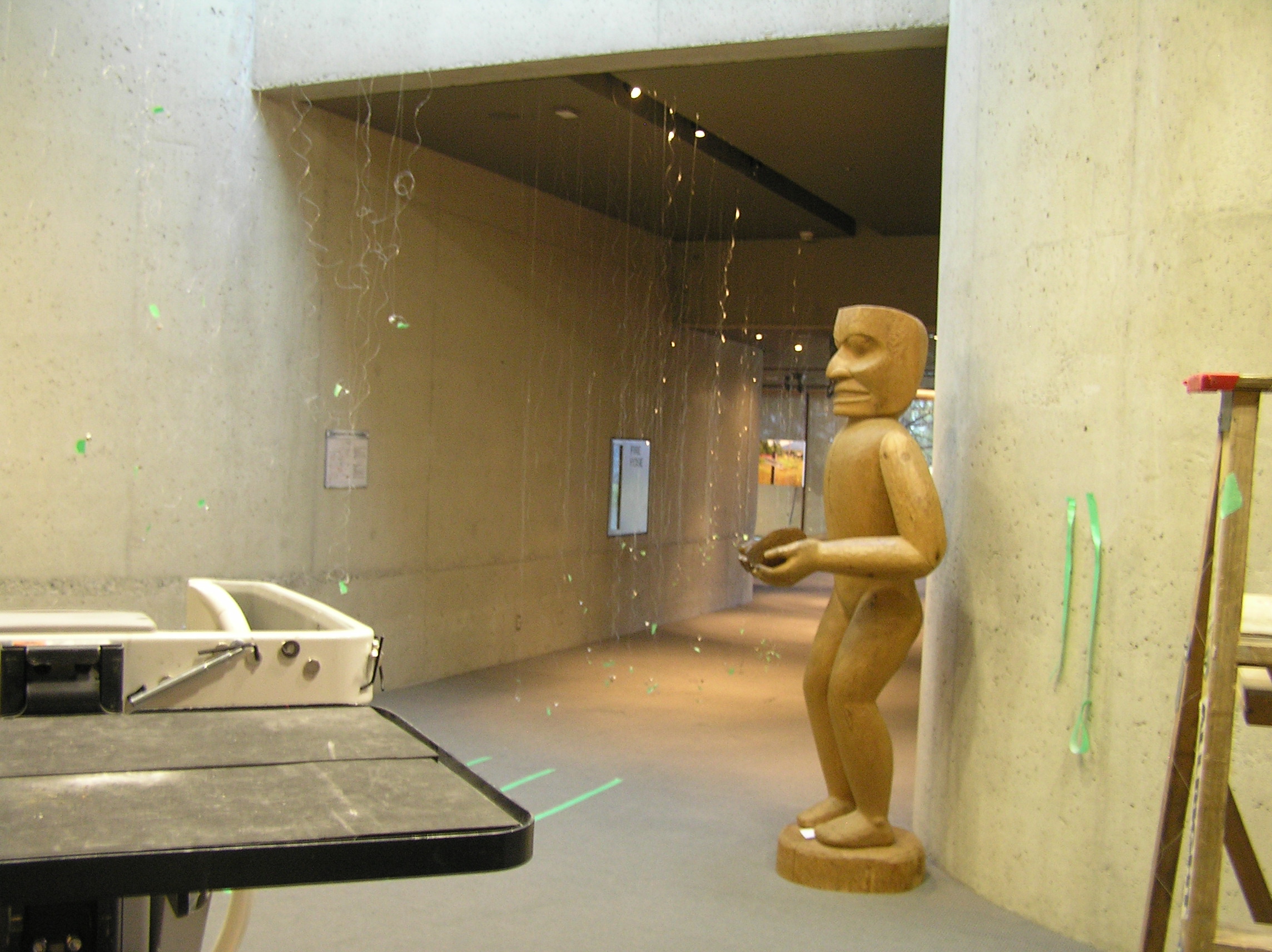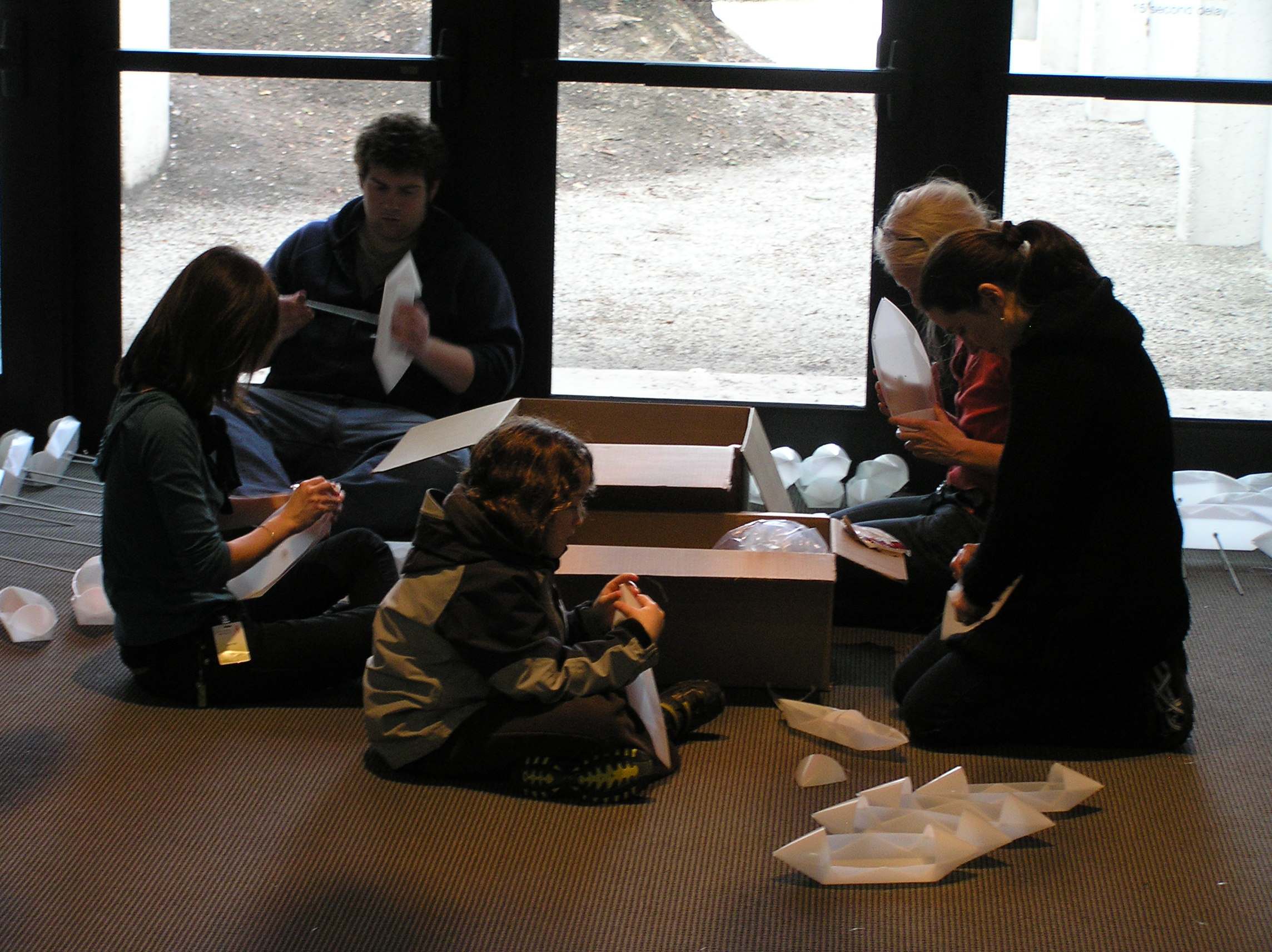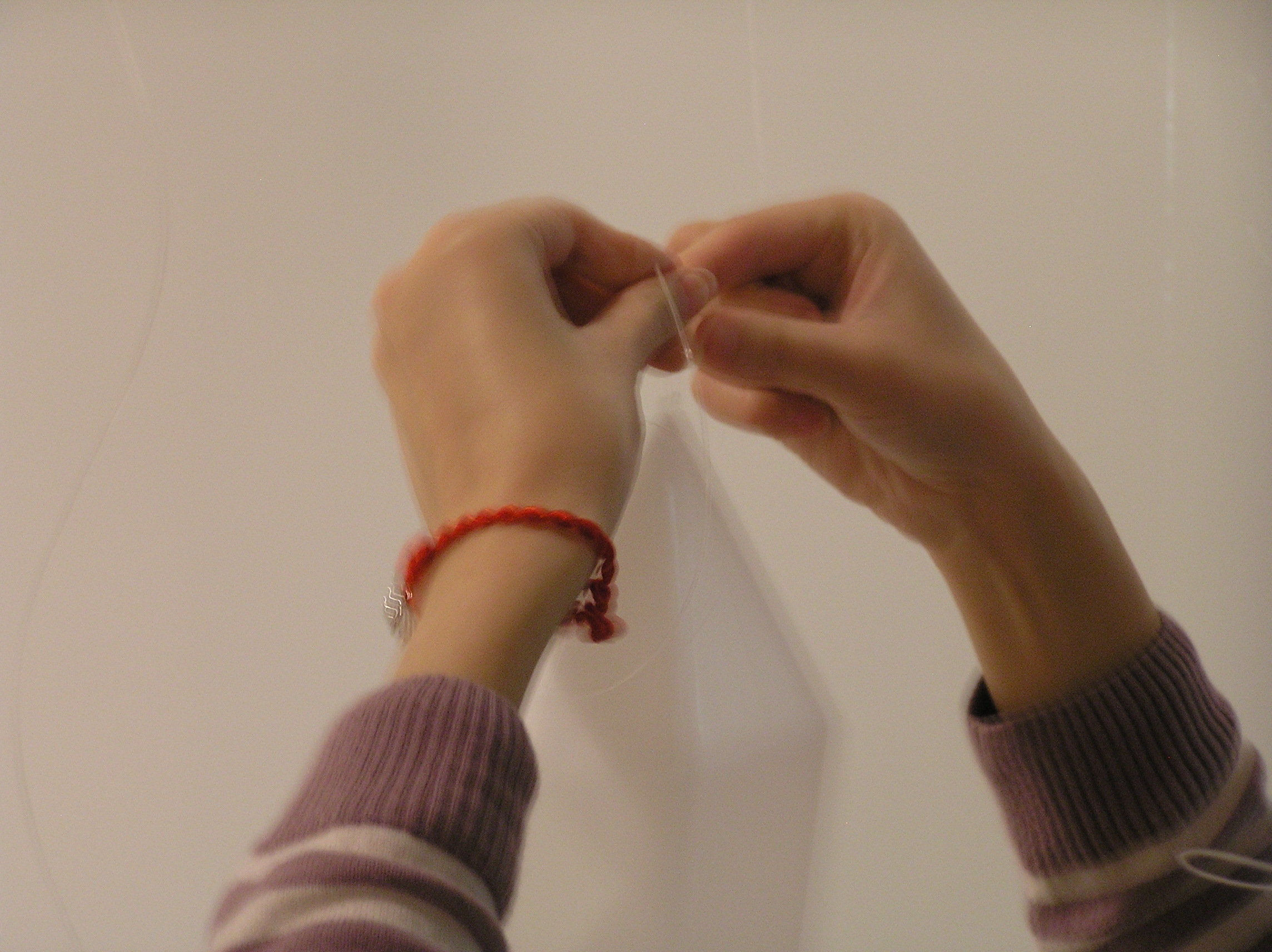This blog has been inactive since our trip last summer, but over the fall, our team has been working on parts of the Waterscapes project, including a panel presentation at the Canadian Asian Studies Association annual conference held in Vancouver this past October.
Gu Xiong is currently finishing a mixed media installation as part of a group show marking the opening of a refurbished Museum of Anthropology at UBC. The show is entitled “Border Zones: Art Across Cultures”, which opens on January 26, 2010 (opening performances from 7-9PM, free admission). I (Chris) have been dropping into the MOA occasionally in order to observe how an installation is put together in a practical sense.
Gu’s piece is called “Becoming Rivers”, and builds on a piece he did for the Beijing Center for the Arts last year (see the piece “Red River” in http://www.artzinechina.com/display.php?a=689). “Becoming Rivers” consists of some 2000 plastic boats hung from the ceiling of the museum, with more installed outdoors (stuck in the ground using metal rods). The boats are shaped into two rivers, which come together in front of a giant painting of the Yangtze and Fraser Rivers based on satellite photos. Panoramic photographs of both rivers are hung on walls around the two riversof boats. When you walk underneath the shimmering flotilla, the boats seem to be floating in mid-air. Although the installation is not finished yet, the effect is already quite striking.
This post, though, is about the process of putting this installation together. The boats took longer to make (at a local factory – ironically, these are NOT “Made in China”) than expected, but Gu and his team of students and assistants have, for past few weeks, been hanging hundreds of pieces of fishing line, weighed down with metals nuts. This week, the boats finally arrived. Each has to be assembled by hand, and then attached to the fishing lines and adjusted for height. One unique feature of the installation is the effect of having boats pass through glass, as if impervious to the imposing physical barrier of the museum building itself. As you can see from the photos below, this is a labor-intensive project. Indeed, I have been fascinated by the labor required to translate concepts into reality, a point that I will come back to in future blog posts.
For now, here’s a sneak preview of “Becoming Rivers” and a reminder to mark your calendars for January 26. For more information about this show, visit
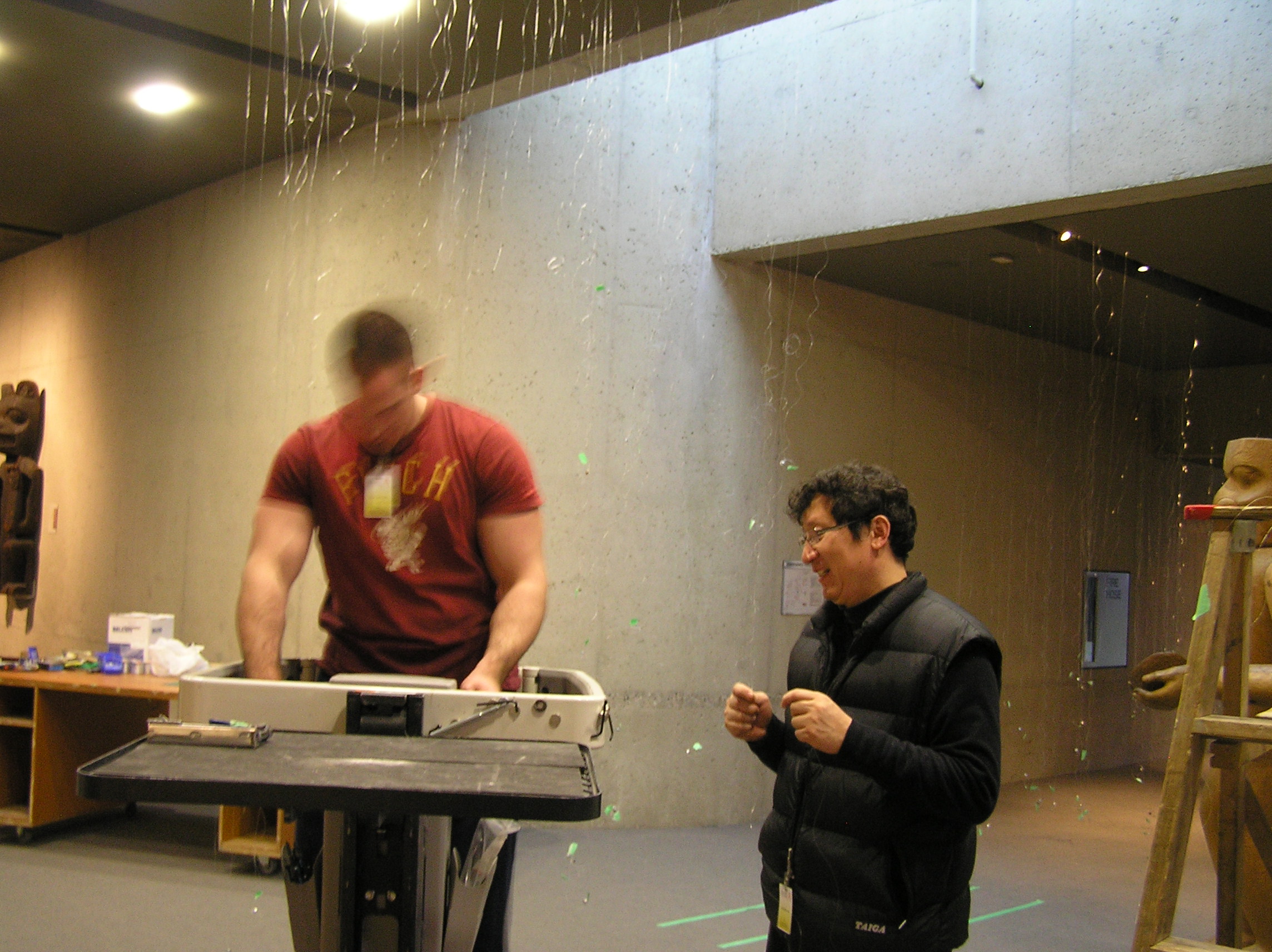
Getting ready to hang more fishing line (Keith, Gu's student assistant, is trying to figure out the hydraulic lift)
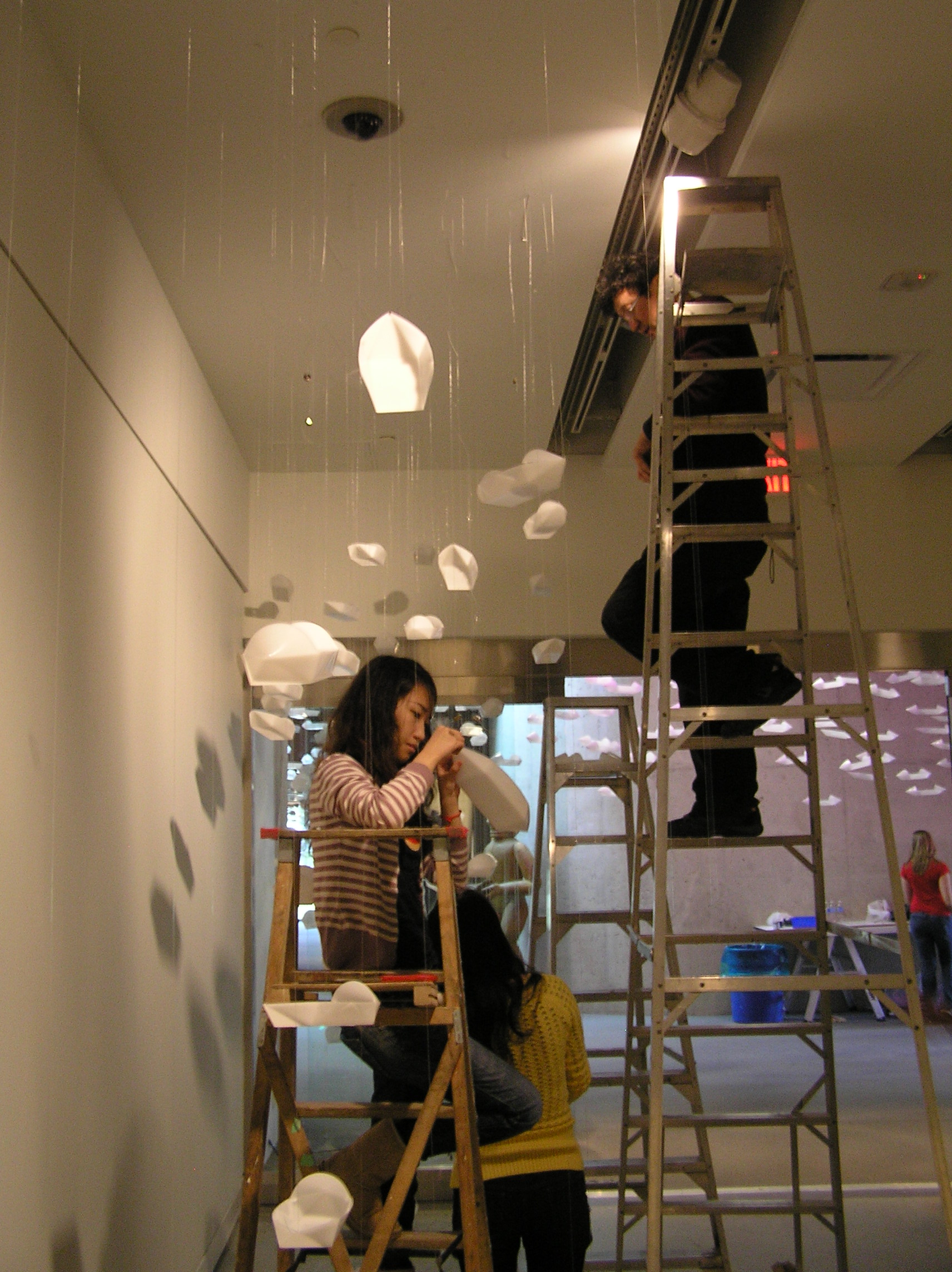
- Hanging the boats (this is Gu’s niece…it’s become a family project!)
Categories:
